Petr Václavek is the creator of the Acorn Elves, beloved characters in the Postcrossing community and beyond.


Petr paused from his work last autumn to share with Clarisse (aka CStar9) how he got his start in photography, give us an inside look at his artistic process, and let us peek at the cute stickers he debuted last year.
- You’ve described the acorn elves (dubánci, in Czech) as a happy accident. When building woodland characters to entertain your children, you ran out of chestnuts and switched to using acorns. At what point did you realize this was an idea that could be widely – even globally – popular?
Yes, it was exactly like that – the acorn elves were created by accident. We ran out of chestnuts and so I used acorns instead, which we had plenty of in the garden. I first realised the popularity of the acorn elves when I posted the first pictures of them on social media – everyone loved them and they were one of my most successful posts. But it took me another year to realize how popular they really are. The first year I made only two or three figures, but a year later I made more and since then I’ve been making them regularly. The most successful one was of course the one sitting on the toilet, which literally went around the world (at least on the internet).
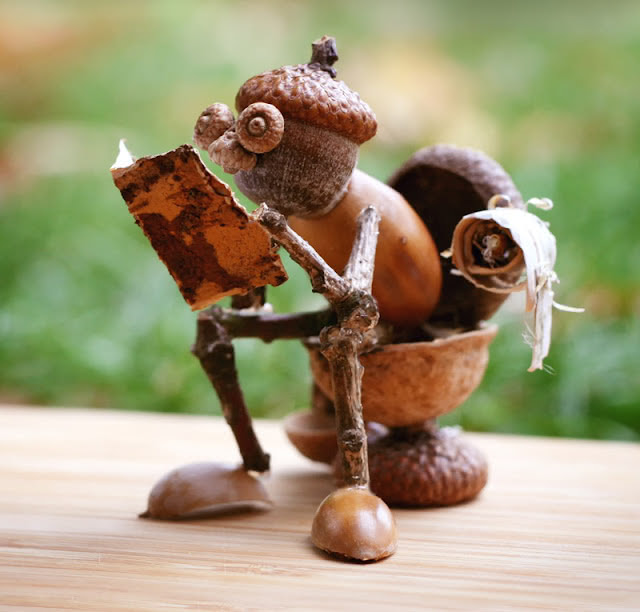
The most famous and widely shared acorn elf - What are some elements that define Dubánci for you?
Playful, curious, mischievous, funny, mischievous again… They are forest creatures that have inhabited oak forests since time immemorial (sometimes you can see them in nature, but they are very shy and can hide themselves skillfully), but at the same time they are – at least some of them – very curious and so they watch what is happening in the human world and then try to imitate humans. But they don’t always get everything right and that’s how a lot of comical situations arise, which I like to capture in photographs.
- How do you get an idea from your head to the final image? Which step in that process is generally the most challenging / time-intensive?
-
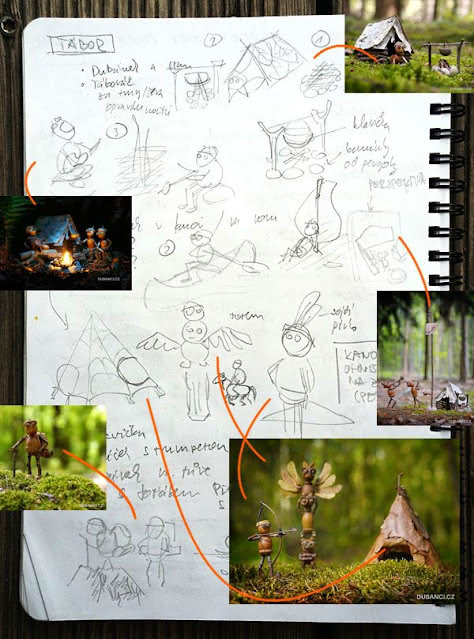
Learn more about Petr’s process behind one picture. The process is sometimes a bit lengthy – sometimes it takes a few years from the initial idea, because I have a lot of ideas and they keep coming. In order to get them out of my head and not forget them, I write them down – actually, I sketch them – in a notebook, and then once in a while I make one of the ideas come true – I build an acorn elf based on the sketch, take it to the woods or some other nice place, take a photo of it there, and then edit the photos in Photoshop at home.
Sometimes the hardest part is to make the acorn elf, sometimes to glue together its equipment (bike, motorbike, lantern), and sometimes it’s much harder to take photos. Just to find a suitable place in the forest I have run dozens of kilometers there. Sometimes the shot needs a lot of editing in Photoshop, because even digital photography isn’t omnipotent (or I shot it wrong).
But I enjoy all of the above stages and am happy when the result entertains the fans.
- Is there a particular image that has a funny or surprising creation story?
It’s interesting that even after eight years I still remember where I took each photo, including the story that led to the photo. Many of the photos were taken with my youngest daughter in the stroller – when she was about to go to bed after lunch, I loaded her into the stroller, grabbed my acorn elves and camera, and headed out into the woods. Along the way I looked for nice places to take pictures and when she finally fell asleep, I stopped and took pictures of acorn elves.
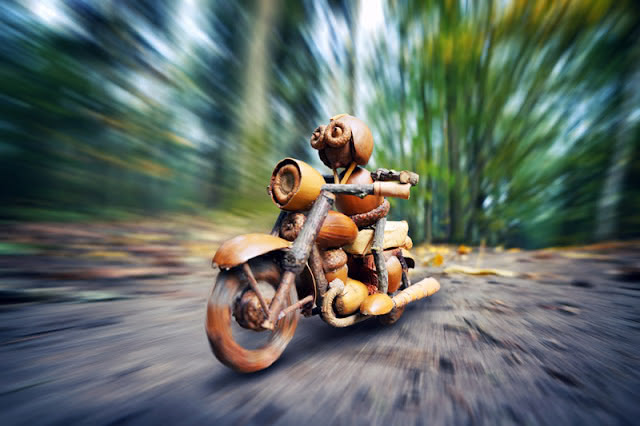
Faithful copy of the famous Czech motorcycle, the Jawa 250 I have made several means of transport for the acorn elves. The first one was a bicycle (I am an avid amateur cyclist), followed by a scooter, a skateboard and then a motorbike came to mind. But I wanted it to be perfect, so I found the plans of a historic Czech motorcycle, Jawa 250, and glued together a faithful copy of it. It’s probably their most challenging item – it took me 10 hours to glue it together, but the result is worth it!
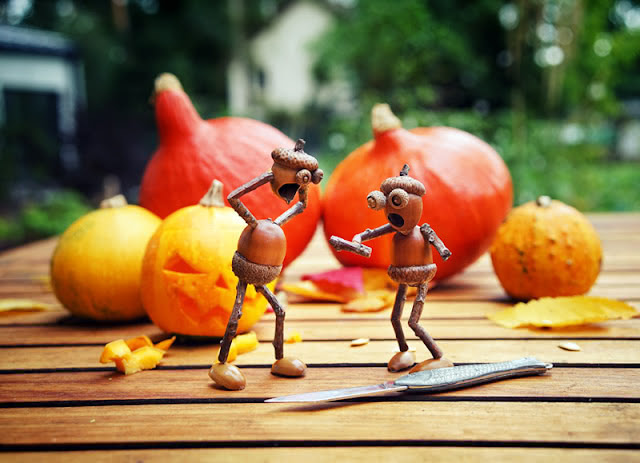
A scene Petr didn’t plan! While photographing the instructions for making Halloween pumpkin decorations for a children’s magazine, one of the acorn elves dropped his little hand. So I immediately shot a horror scene, which was definitely not in the plan. At least the kids will be more careful of their fingers when they are working with the knife while carving the pumpkins!
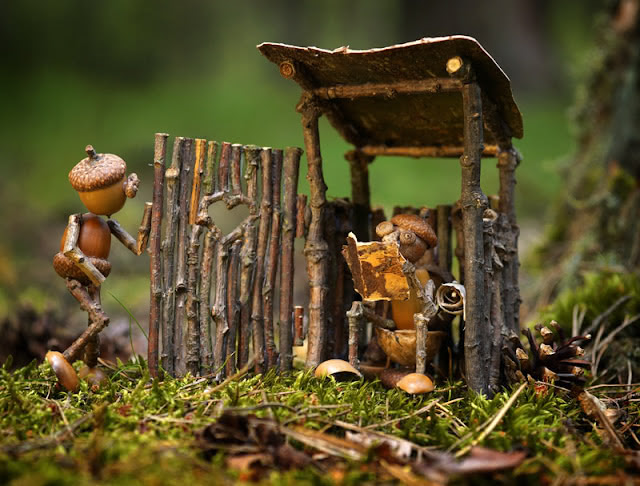
My most famous and favourite photo is of the acorn elf sitting on the toilet and reading newspapers. When I was taking a set of postcards for the holiday campers, I thought I would reuse the toilet! All I had to do was make a wooden caddy and a funny new scene was ready!
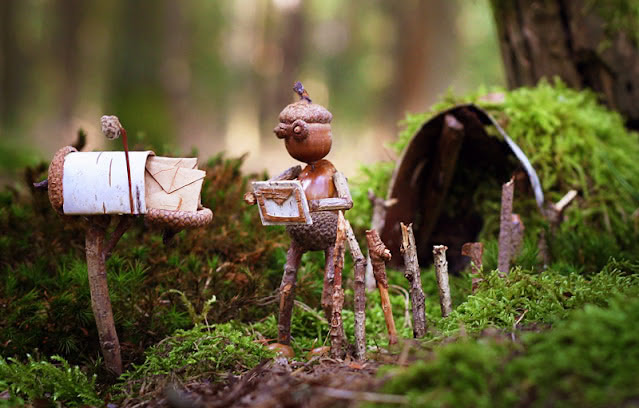
Petr’s first postcard of an acorn elf This was one of the first acorn elves postcards. The owner of a local postcard company talked me into designing a couple of postcards with acorn elves on them. And when I told him that postcards weren’t used much anymore, he showed me Postcrossing. I was impressed and immediately asked him what should be on the postcard, what motif would users like the most. He replied – well, something with mail, like a mailbox. I immediately remembered that a few days ago I was building little houses for the acorn elves in the nearby forest with kids, so I just glued together a mailbox and some letters and postcards from birch bark at home and went to take pictures.
I was once approached by a magazine that said they would like to do an article on acorn elves and that they could be on the cover, but as it was for the Christmas issue they wanted something with a Christmas theme and came up with the nativity scene.
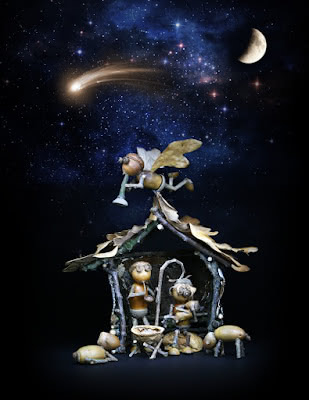
I took it as a challenge and had a great time. Especially shooting in the dark and lighting the scene. It made a perfect cover and to this day it is one of the most beautiful Christmas cards.
- What is your studio like?
I may surprise you, but I don’t have a studio. I usually glue them in the evenings at home, right in the living room on the table, when my wife and children are asleep. I have a quiet place to work and no one disturbs me. It’s just that the midnight clean-up is sometimes more difficult, because I have to carry a lot of boxes of material and all sorts of tools while I’m working.
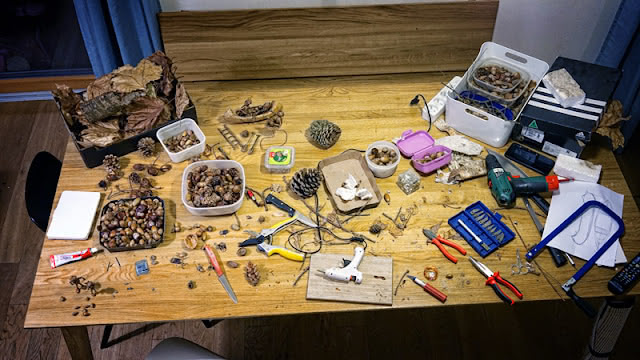
Petr’s studio: a table in the living room in the deep night The most important tool in the work is of course the hot glue gun – it’s unbelievable what you can do with a melt gun. At one time I used to make stuffed animals with my youngest daughter with a melt gun because I got tired of sewing them with a needle :) Another must is a sharp knife or gardening shears. But sometimes you also need to use a jigsaw, a hacksaw, a small cutter or a soldering iron.
And if you ever catch me gluing acorn elves in the evening, you might be surprised how often I look in the mirror and try out their poses – I want the result to look as natural as possible. So sometimes I’ll use a mirror, other times I’ll search the internet for inspirational photos of the pose.
- Acorn elves look simple. But there are trade skills needed to create their world: woodworking, photography, and design, to name a few. You learned woodworking in your father’s workshop as a child, then studied software engineering and became a programmer and web designer. When did photography come into your toolkit? And, do you still work as a designer?
When I was a kid, I liked to help my dad in the darkroom when he developed our family photos, but I didn’t try photography then. I didn’t get interested until after graduation, when I was a senior front-end developer for a multinational corporation and the first affordable digital cameras came out.
Sometime in 2003 I bought an Olympus C730 digital ultrazoom with an amazing 3 megapixel resolution and 10x optical zoom. It was a small miracle for me and I fell completely in love with digital photography – I watched a lot of photography websites, had my images critiqued and gradually learned how to take decent pictures.
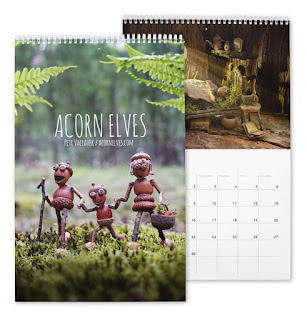
Everyone liked my photos and I often heard that I could do it for a living. So I tried uploading my images to microstock sites and was surprised at how well they sold. So I gradually built up my portfolio on the microstock in the evenings, and later I started adding vector illustrations because I found they sold even more and I enjoyed making them.
As time went on, my earnings from the microstock were more than my income from my corporate job, so I switched to freelancing. Nowadays, I still make my living from the microstock, but I do other graphic design work on commission from time to time, and then of course the acorn elves make some money too, but I still think of them as my creative escapades that I do for fun.
- What is your relationship to postal mail, and how has that evolved over time?
I love the mail, it’s always a surprise what turns up in the mailbox and when it arrives. When I discovered Postcrossing, I thought it was a great idea and I love it! My kids and I have sent several postcards out into the world this way. So I’m keeping my fingers crossed that the price of postage doesn’t go up too much and that Postcrossing will continue to thrive in the future.
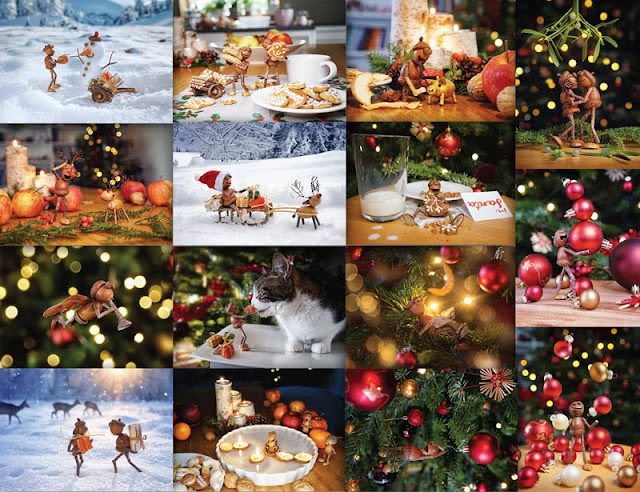
And one more thing – this year I have prepared a special set of stickers with acorn elves for decorating postcards. So maybe someone will like it.
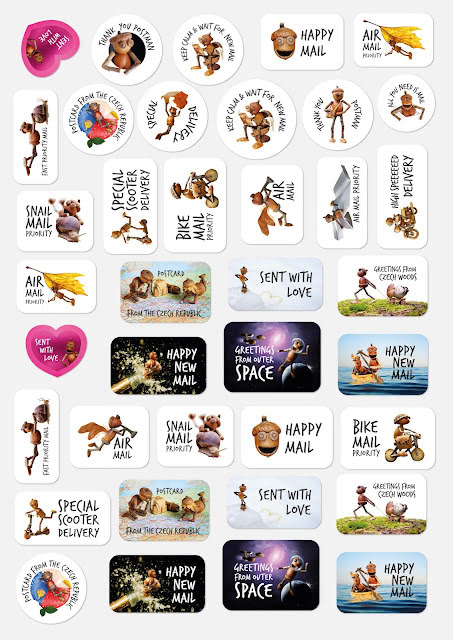
Get the stickers here! - What’s something you’re proud of, outside of the acorn elves project?
Definitely my kids! We have three and they’re so smart. My oldest is following in my programming footsteps and my two daughters are incredibly creative, so I have my acorn elves followers.
- The acorn elves are now postcards, calendars, stickers, t-shirts, books, even games. What’s next for them, and for you?
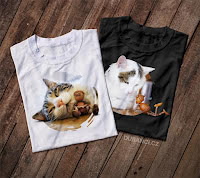
I’ve been making postcards, calendars, and t-shirts for years. I thought it was a shame to keep the photos only on the internet. This way, the acorn elves are more exposed to the real world and many more people get to know them. Over time, in addition to my Czech e-shop, I started a shop on Zazzle, just to fulfill the wishes of my foreign fans. And of course I also made a separate site in English.
In the last few years, I’ve started to create more books. I began to collaborate with a successful children’s book writer Klara Smolíková and so gradually three books with stories of acorn elves for children were created. It’s a different job again, when I have to read the text and take pictures according to the story.
I didn’t limit the author in any way as to what is and isn’t possible in photography and so there were many challenges that I thought I couldn’t possibly overcome. For example, I photographed a flying bird nest with a lizard and an acorn elf, or an acorn elf with a dog fleeing underground through mole burrows from fighting earthworms. But in the end I did it all! And if I can get a publisher abroad, these lovely books will be published in English.
Actually, I have already published one book in France, bilingual (English and French): Acorn Elves – the lovely creatures from Petr Vaclavek. But it doesn’t contain a story for children; it’s a book of my photos with short bilingual captions, a short interview, and a photo guide for gluing and taking pictures of an acorn elf.
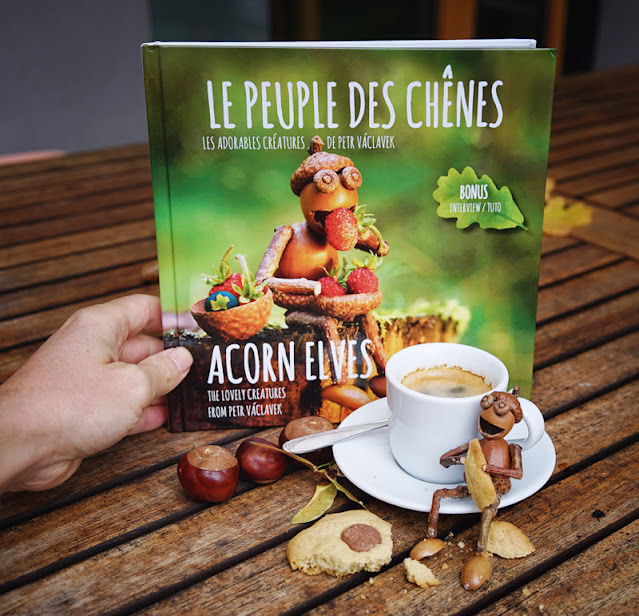
- What does the future hold for the acorn elves?
I’d love to see them in an animated movie or TV show someday. I’ve been working with a Czech company on this for a year now, but it’s a long haul – you can’t do it with one person anymore. I definitely also want to try to come up with a board game with acorn elves in the next few years, and maybe we can make a computer game – that would be a nice stepping stone to a movie.
You can find out more about Petr and his acorn elves on his website, Facebook, Instagram, Youtube or other social media. You can also visit his shop for Europe or for the rest of the world.
And now, for the traditional giveaway! Clarisse is going to send 4 postcards featuring Petr’s Acorn Elves to 4 randomly picked postcrossers. To participate, you have to tell us: “If you could create your own acorn elf, what would it look like or what would it be doing?” Leave a comment below, and come back this time next week to check out the winners!
And the winners of this giveaway, as chosen by Paulo’s random number generator are… ChrStroh, wendyquilter, harrickson and Blumenkohl! Congratulations, and thank you all for participating!
























 Anderson Design Group is an ever-evolving
Anderson Design Group is an ever-evolving  The common thread that ties our diverse styles together is attention to authentic detail and a love for Golden Age-styled artwork. I push my artists to create artwork using techniques, rendering styles, colors, and type styling that was popular from 1900 to 1960. We use computers and modern tools, but I encourage my artists to study art history—especially early 20th-century commercial art—and to emulate the sense of style, passion, and grace of that era.
The common thread that ties our diverse styles together is attention to authentic detail and a love for Golden Age-styled artwork. I push my artists to create artwork using techniques, rendering styles, colors, and type styling that was popular from 1900 to 1960. We use computers and modern tools, but I encourage my artists to study art history—especially early 20th-century commercial art—and to emulate the sense of style, passion, and grace of that era. 

 My son Nathan is a writer. He and I had an idea—what if we took all of the poster art and we published a book to celebrate the 100th Anniversary of the National Parks Service? (The Centennial would be in 2016.) So we published
My son Nathan is a writer. He and I had an idea—what if we took all of the poster art and we published a book to celebrate the 100th Anniversary of the National Parks Service? (The Centennial would be in 2016.) So we published 
















 which I loved so much that I painted and posted a postcard to thank her. When she received it, she asked if she could use my words as a quote on the front of the book. Now, I don’t do endorsements for books, but I said, Are you kidding me? That’s great.
which I loved so much that I painted and posted a postcard to thank her. When she received it, she asked if she could use my words as a quote on the front of the book. Now, I don’t do endorsements for books, but I said, Are you kidding me? That’s great.












